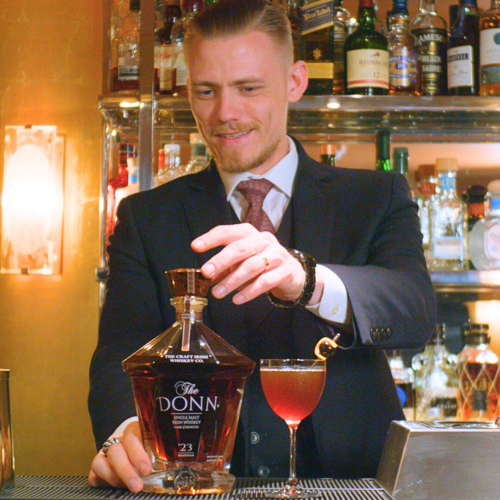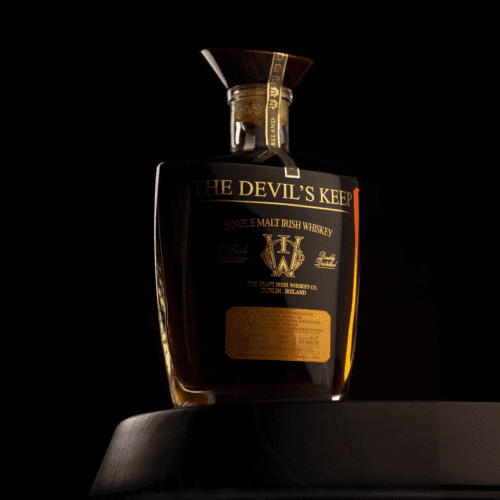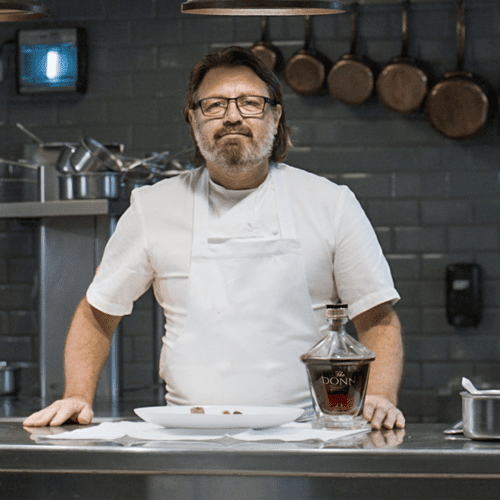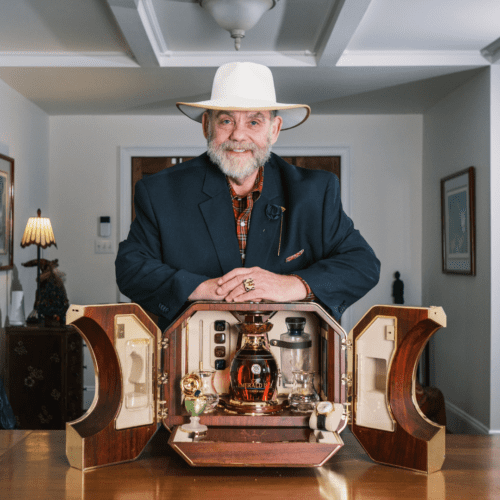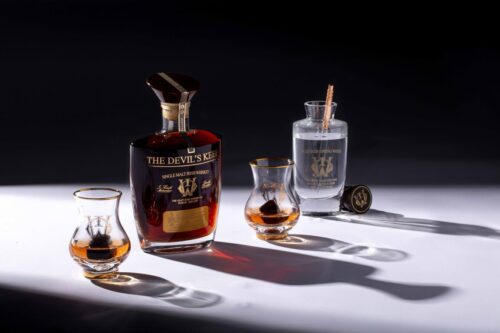In whiskey making these days, it’s industry standard to add water after the liquid has spent years maturing in the cask. Why? Well, to be blunt…It’s cheaper and far easier to do it this way. By adding water to the whiskey at this point of the process, you are cutting down your whiskey—stretching it out and saving money on storage space during the many years it needed to age and mature.
That’s all fine and good for the bottom line, but what about that complex whiskey flavour so loved by the whiskey drinker? Founder of The Craft Irish Whiskey Co., Jay Bradley, has determined that this standard is actually subpar. Through years of scientific research, testing, white papers and detailed analysis, he found that adding it before would allow the water and spirit to both take on the deep, rich flavours of the wood. As Jay says, “In other whiskeys, only a fraction of the end product has been allowed the time to mature in the barrel. That means a large part of the liquid is missing the key maturation stage.”
Let’s take a better look at the reasons distillers add water to whiskey at bottling and how The Craft Irish Whiskey Co. has diverted from this norm to create the finest whiskeys.
Why do distillers add water to whiskey?
A spirit direct off the still wouldn’t be very palatable so by law it must be left to ‘mature’ for at least three years in a wooden barrel. This is ‘maturation’ and is arguably where the real magic happens! During this period, which can range from three years upwards, chemical reactions occur between the alcohol and the wood. The wood draws out the less desirable compounds of the spirit, while imparting compounds that give whiskey its flavour, including vanilla, toffee and oak.
Following this period of maturation, a whiskey will often be too strong to enjoy. So the vast majority of whiskey-makers will dilute that final concentrate with water to bring the ABV down to a more palatable level. Of course, this not only dilutes the ABV, but also the flavour and the mouthfeel, dulling the rich layers that have been carefully built up over the years or decades.
And while water is commonly seen as something to stretch out the volume of production, it is actually quite prone to picking up the flavours and aromas of surrounding elements. For instance, if you store ice in the freezer next to meat, you could end up with cubes that exert some of those same tones when you drop it into your drink. So just imagine how much it picks up from the wood and the whiskey as it sits in the cask for years upon years. The impact is hardly incidental here.
For that reason, The Craft Irish Whiskey Co. approaches the addition of water as a far more integral part of the process than simply a means of drawing down the ABV. It becomes a key element in itself, one that can work with the spirit rather than against it. Not merely an afterthought as it is for so many, the water takes on a role that sees it become as much a part of the finished product as the initial vital ingredients of the new make distillate.
The Craft Irish Whiskey Co. approach to water and whiskey
The Craft Irish Whiskey Co. was built on a revolutionary approach to whiskey production, sparing no expense to create the perfect whiskey. And water is a key part of this – from when it’s added to the barrel, to the water you add when drinking the whiskey. In fact, our three year search for the perfect water to add to our whiskeys when drinking epitomises our approach to every step. Not just any old water would do – rigorous testing of hundreds of water sources around the world allowed us to discover Hallstein Artisan Water, the world’s purest water, sourced from an aquifer 700ft below a UNESCO World Heritage Site in the Dachstein Mountains in Austria.
Instead of diluting the concentrated spirit at the end, The Craft Irish Whiskey Co. adds water before maturation for our new make whiskeys, and before the spirit enters its finishing barrel for our more mature single malts. This encourages an extraction of the wondrously round and complex caramel notes that exist deep inside the staves of the barrel and allows both water and spirit to work together. Anyone who has tasted a whiskey directly from the barrel will know that experience is without compare. Our methods ensure that when the whiskey maturation is complete, the whiskey can be bottled directly from the barrel at cask strength, retaining a smoothness and vibrancy that is distinctly missing from the whiskeys that are “proofed down” with water directly after ageing.
Of course, crafting whiskey in this way, by adding water to the barrel at the start or before finishing, rather than before bottling, isn’t the most cost effective way to do it. Adding water before maturation or finishing means more barrels, more storage, and more evaporation, all of which means more expense. For any large whiskey brand with shareholders watching the bottom line it would be impossible to justify. But for The Craft Irish Whiskey Co., the pursuit of the perfect whiskey comes before profit.
Adding water before; pricier but precise
In short: the pricier way to do things here is the more precise and appropriate way to do it. If you’re looking to pour the highest quality whiskey into your glass, that is. Which, for The Craft Irish Whiskey Co.’s founder, Jay Bradley, is a personal obsession. “We also under-fill barrels to allow for more oxidation and maturation. It’s not a cheap way to do it; just as adding water before maturation means more barrels, more storage, and more evaporation, under-filling means even more barrels and storage. But it adds an undeniable depth and full mouthfeel that sets our whiskeys apart from their peers.”
Rather than adding water at the end and diluting all those incredible rich notes, adding water before creates an alchemy in the barrel that can then be enjoyed by the drinker as if they were in the warehouse, tasting a whiskey directly from the barrel. While the majority are unlikely to ever taste a whiskey in this way, directly from the cask, our whiskey offers that experience in the comfort of your home or in a Michelin-starred restaurant. And as we hear time and again from our clients, they can’t go back to drinking whiskey made the conventional way after tasting it as if straight from the barrel.
A whiskey tasting experiment
You don’t have to take our word for it. Try it out for yourself. Pour two glasses of whiskey side-by-side—preferably at the same or similar alcohol by volume (proof). In one, pour a liquid that was cut down with water after maturation, according to modern standards of production. In the other, pour a whiskey from The Craft Irish Whiskey Co., or any other of the few brands that prefer the pricier methodology. Nose them in the glass, swish them around your palate. Let them linger. Nobody knows what you like better than you. But without a doubt, you’re likely to learn that there’s a reason why the lion’s share of today’s whiskey makers are mixing water in when they do, at the last minute. And it has nothing to do with flavour and everything to do with cutting costs at the expense of that flavour!




